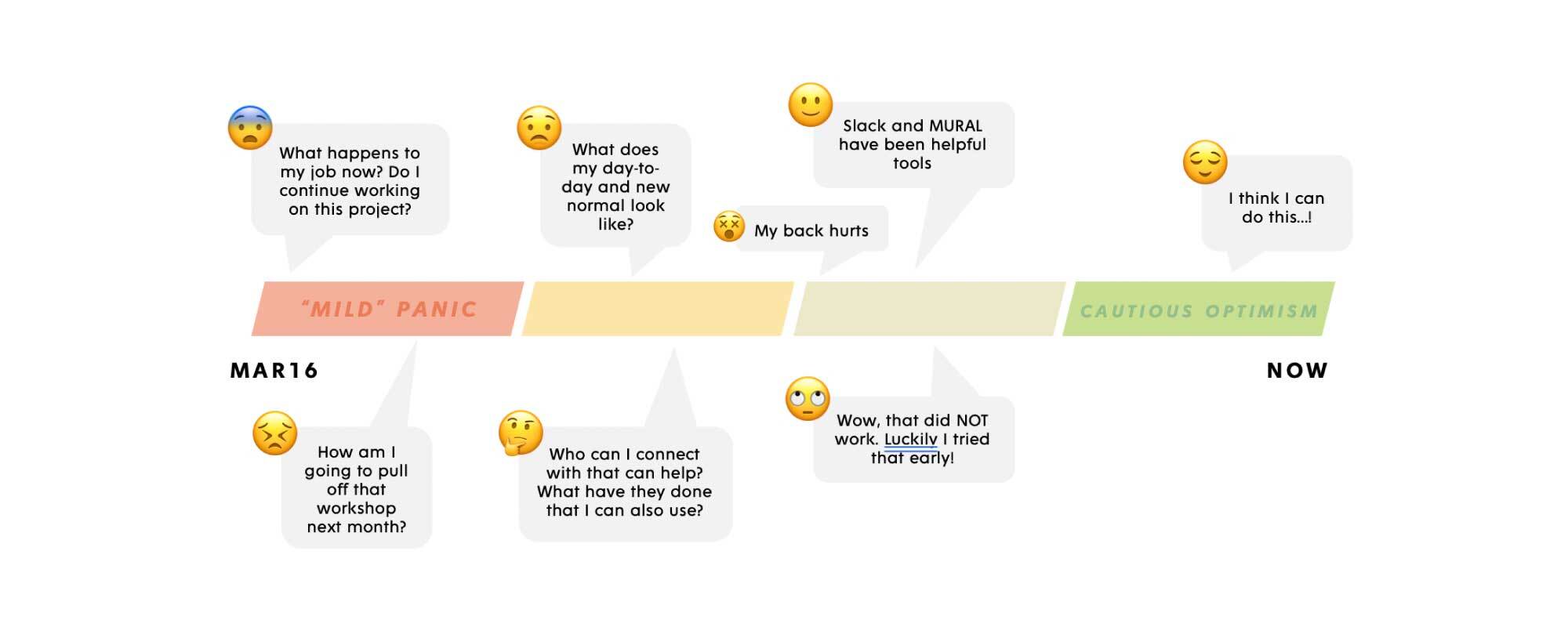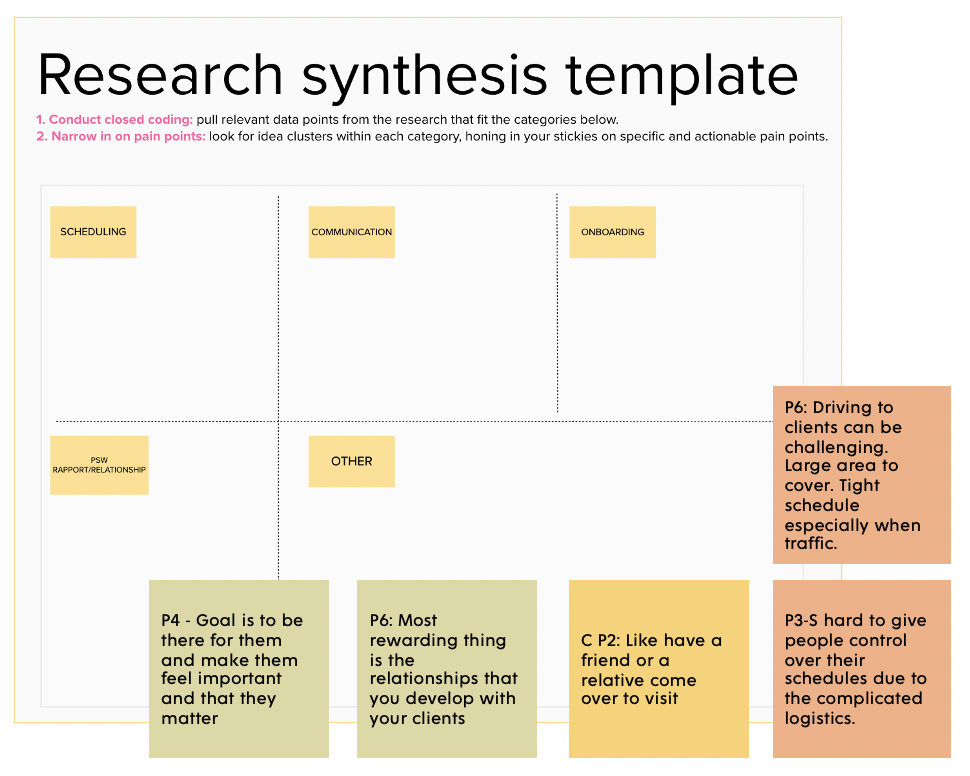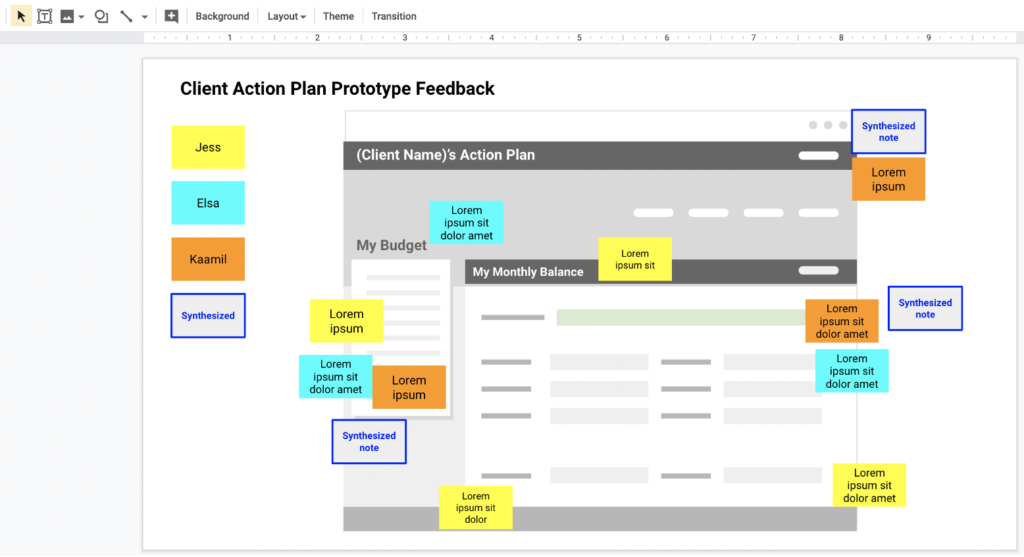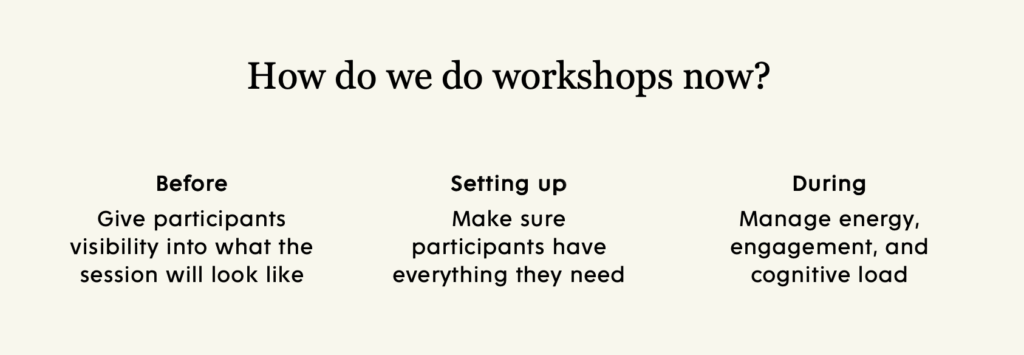
Ideas by Elsa Wong
Practicing remote service design in the public sector
Author

- Elsa Wong
- Senior Service Designer
The COVID-19 outbreak has made the demand for public services more pressing than ever, but remote service design practices are not yet well established. Luckily, we’ve had many opportunities to navigate this relatively uncharted territory in recent weeks.
With plenty of trial and error under our belts, we recently connected with fellow service design practitioners to share some tangible wins and learnings and to reflect on our collective experiences so far.
Designing for public services during the pandemic
Service designers in the public sector play a vital role in ensuring government services are designed with citizens in mind, actively engaging them in the development process to ensure new policies and services hit the mark when implemented. During the COVID-19 outbreak, this work is more important than ever, as citizens increasingly look to the government for information and services to help them maintain safe and productive lives. But collaboration and high-touch communications are traditionally at the heart of practicing service design, making it particularly challenging to stay the course on projects in the new remote reality.
How will we conduct user research if we can’t make behavioural observations in the field? Is it possible to host a hands-on workshop with citizens and frontline staff virtually? How will we maintain high levels of collaboration within our project teams?
These are questions we’ve grappled with since Bridgeable shifted to working from home on March 16—questions we’ve not been alone in asking.
Luckily, as service design consultants in the private sector, we’re well-equipped to be nimble in our response, diving in head-first to try, test, and iterate remote methods and tools for user research, prototyping, validation, and generative workshops. We’ve been sharing wins and learnings openly among our project teams, and, over the course of a few weeks, a collective sense of confidence in our remote capabilities has taken hold.
Sharing lessons learned
Eager to share our learnings and connect with other practitioners, we reached out to Ontario Digital Services and a co-lead of the Ontario Government’s service design guild, proposing to host a webinar on practicing remote service design in the public sector. Their answer was a resounding “yes.” Our team was thrilled to spend an hour with the 90+ public sector professionals who attended our webinar.
A webinar was an ideal avenue for us to practice engaging a large virtual audience while testing and reinforcing our learnings. The session opened up with a short introduction and disclaimer that while we have yet to perfect the art of remote service design, we have had a few weeks of trial and (multiple) errors and know that our lessons are solid enough to share.
Key design phases implemented remotely
Using examples, we chatted through the key design phases of most human-centred design projects: research, synthesis, ideation and prototyping, and validation. Some phases need creative re-thinking, but others don’t look all that different.
- Conducting primary research remotely is something many of us have long done through over-the-phone interviews. Video chats have the added benefit of richer communication through facial expressions and body language, but managing the technology may quickly become a distraction. Obtaining virtual consent can seem cumbersome, but it’s crucial to spend the extra time to collect a digitally signed consent form or an audio-recorded verbal consent. Ethical research processes are not only standard, but they support your participants during uncertain times.

MURAL helps our team sort through large amounts of data. In this example, we are using a closed-sort approach to organize our data points into predefined categories.
- Synthesis tends to happen collaboratively via sticky notes and foam core boards when conducted in person. This process can be re-created using your favourite digital collaboration tools. The key is to store your data in a place accessible to the team where individual data points can easily be rearranged and re-clustered. Currently, we’re finding that MURAL and Google Sheets suit most of our synthesis needs.
- Remote prototyping looks largely the same as in-person prototyping because we already tend to conceptualize our ideas using digital storyboard sketches. In a remote environment, it’s easy to user-test these sketches via virtual tools.

During validation, we put each screen of our prototype into Google Slides so that we can attach any specific user feedback directly onto relevant features.
- Our remote validation methods are similar to our research interview methods but take a narrower focus. Instead of asking open questions and transcribing the data, we prepare our prototypes—like digital screens or moments of a new service—so that validation feedback is captured and directly linked to specific features, which makes for easy iterating.
Tips for conducting workshops and meetings remotely

With all of our usual workshops going digital, we’ve had to rethink how to facilitate virtual sessions so that we’re maximizing the outputs without compromising the participant experience.
Because workshops are a key service design tool used throughout the design process, we covered some of the best practices our team has established over the past few weeks. Looking at workshop and facilitation preparations, we walked through some traps that were easy to fall into but equally easy to avoid with proper setup. For example:
- Ask participants to log in ten minutes early to mitigate any technical issues they may have up front.
- Unless everyone is expected to speak, default your participants’ audio to mute so that distracting background noises are minimized.
- A facilitator’s goal during any digital session is to manage participants’ energy levels, engagement, and cognitive loads. To keep people actively a part of the workshop, it’s helpful to break up long presentations with short and easy exercises, like polls, to maintain their attention.
A community conversation about remote service design
We concluded the webinar with a short Q&A period where we dove deeper into specific methods. Some participants expressed that our tools and methods align with what others have shared in the field, validating our approaches.
Sharing our evolving remote practice allows us to show that, even during this period of physical distancing, it’s still possible to move our work forward by establishing flexible methods that are effective amid our current constraints and can benefit practitioners in the future.
Throughout the session, participants found themselves connecting with others who faced similar challenges and exchanged their own experiences in approaching these barriers. One of our goals for the webinar was to spark a community conversation about remote service design wins and learnings. Watching participants fill up Zoom’s chat feature with thoughtful discussion has encouraged us to plan for hosting more open dialogues in the future.